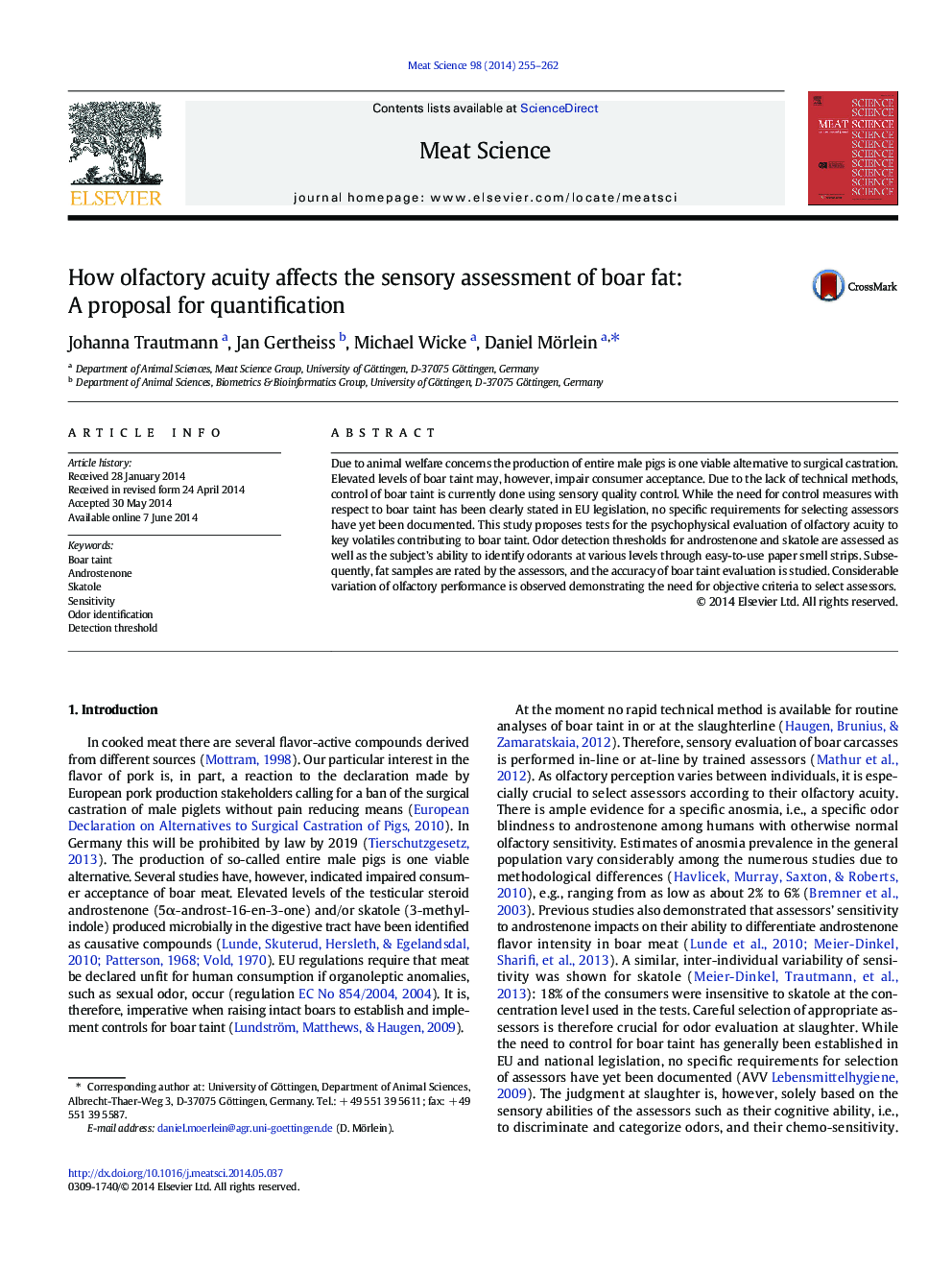| Article ID | Journal | Published Year | Pages | File Type |
|---|---|---|---|---|
| 2449969 | Meat Science | 2014 | 8 Pages |
•A quantitative approach to characterize assessor performance is proposed.•Intra- and inter-individual variability of acuity to androstenone and skatole is shown.•Olfactory acuity affects the sensory evaluation of back fat.•Sensory data are related to chemical analyses and (dis-)agreement is discussed.
Due to animal welfare concerns the production of entire male pigs is one viable alternative to surgical castration. Elevated levels of boar taint may, however, impair consumer acceptance. Due to the lack of technical methods, control of boar taint is currently done using sensory quality control. While the need for control measures with respect to boar taint has been clearly stated in EU legislation, no specific requirements for selecting assessors have yet been documented. This study proposes tests for the psychophysical evaluation of olfactory acuity to key volatiles contributing to boar taint. Odor detection thresholds for androstenone and skatole are assessed as well as the subject’s ability to identify odorants at various levels through easy-to-use paper smell strips. Subsequently, fat samples are rated by the assessors, and the accuracy of boar taint evaluation is studied. Considerable variation of olfactory performance is observed demonstrating the need for objective criteria to select assessors.
